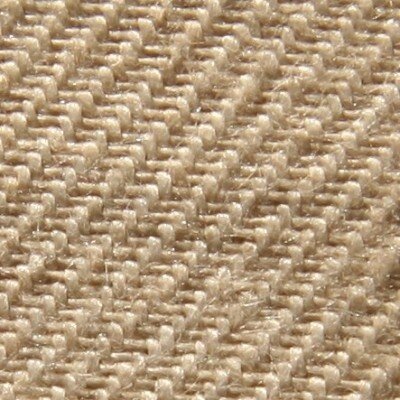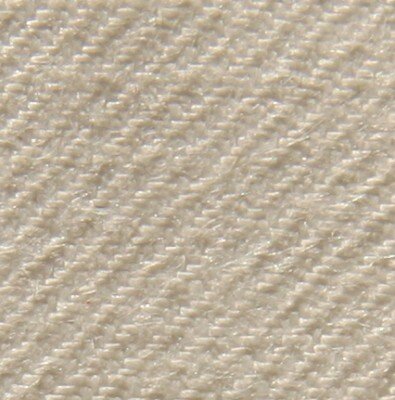S's and Z's of Linen Twill
Today I'll be talking about the twist of the thread and the weave in linen twill. Although more often than not the twist of the thread or the weave isn't information that the manufacturer or seller provides, it's interesting and knowledge is always a good thing. I'll be explaining S twist and Z twist - both in the fiber and the weave of the twill and showing you some examples of the 3 twill fabrics I'm considering using for my screen project.Most natural fibers are spun in either an S twist or a Z twist. The difference between the two is the direction in which the fibers are twisted as the thread is spun: S twist is to the right and Z twist is to the left. For a great article about this see Mary Corbet's site here.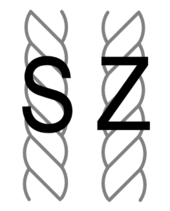 Twill fabric is also woven in two different directions: a left handed or S twill (Figure A below) and a right handed or Z twill (Figure B below).
Twill fabric is also woven in two different directions: a left handed or S twill (Figure A below) and a right handed or Z twill (Figure B below).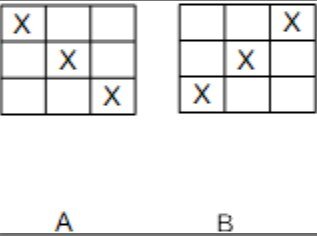
Legacy Linen twill has the least pronounced twill and is the softest of the three fabrics. The color is a beautiful lovely white. This twill is the lightest in weight and I would need to back it with muslin before stitching. The cost for a 62 x 32 inch piece is €60.
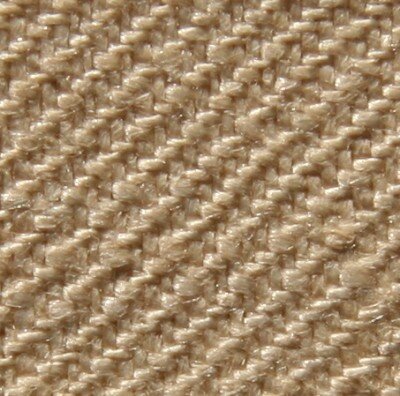 This is the same twill I used on the Phoenix project. The twill is a bit less pronounced than the Crewel Work Company twill. It's not quite as heavy as the Crewel Work Company twill but heavier than the Legacy Linen twill. The color is the same pretty oatmeal color. The cost for a 1 meter x 155 cm piece is €50.One other consideration is the weight of the yarn I'll be using. The Heathway wool I've chosen is a finer weight wool. It's similar in weight to the Renaissance wool I used for the Phoenix project. That combination of medium weight Burford Needlecraft twill and finer weight wool worked very well on the Phoenix project so I'm sure it will work well with the Heathway wool.That said, I love the color of the Legacy Linen twill. The combination of the Heathway wool and the fabric can be seen in the photo on the home page on the Tristan Brooks website. It's just beautiful and I love how the white of the fabric brings out the color in the wool. So I'm leaning in that direction for artistic reasons.The Crewel Work Company twill is used for all of their gorgeous kits and I have one still to finish and another one waiting to be worked. It is perfect for the Appleton wool that is provided but I'm not sure how well it would work with the finer weight wool.I also have to consider shipping and possible import duty to Germany from the USA for the Legacy Linen twill. The other two come from the UK so import duty isn't an issue and shipping will be reasonable.Choices, choices, choices! Any thoughts? Advice? Leave a comment and let me know!
This is the same twill I used on the Phoenix project. The twill is a bit less pronounced than the Crewel Work Company twill. It's not quite as heavy as the Crewel Work Company twill but heavier than the Legacy Linen twill. The color is the same pretty oatmeal color. The cost for a 1 meter x 155 cm piece is €50.One other consideration is the weight of the yarn I'll be using. The Heathway wool I've chosen is a finer weight wool. It's similar in weight to the Renaissance wool I used for the Phoenix project. That combination of medium weight Burford Needlecraft twill and finer weight wool worked very well on the Phoenix project so I'm sure it will work well with the Heathway wool.That said, I love the color of the Legacy Linen twill. The combination of the Heathway wool and the fabric can be seen in the photo on the home page on the Tristan Brooks website. It's just beautiful and I love how the white of the fabric brings out the color in the wool. So I'm leaning in that direction for artistic reasons.The Crewel Work Company twill is used for all of their gorgeous kits and I have one still to finish and another one waiting to be worked. It is perfect for the Appleton wool that is provided but I'm not sure how well it would work with the finer weight wool.I also have to consider shipping and possible import duty to Germany from the USA for the Legacy Linen twill. The other two come from the UK so import duty isn't an issue and shipping will be reasonable.Choices, choices, choices! Any thoughts? Advice? Leave a comment and let me know!

